Alfa Romeo’s heritage is filled with some of the most lust-worthy automobiles that the world has ever seen. With help from many of the most prestigious carrozzerias, firms like Zagato, Ghia and Touring would help form some of the most memorable shapes in the history of the automobile.
The coachbuilt-era came to an end with the 1900 series cars from Alfa Romeo. With World War II in its rearview mirror, Alfa introduced a true mass-market automobile platform that carried on their tradition of performance while introducing new levels of versatility and value. The new design was met with great praise. The car is credited with many firsts for Alfa Romeo, including their first use of monocoque construction, their first 4-cylinder twin cam engine and the first Alfa Romeo to be mass-produced.
The 1900 was also the final Alfa Romeo series to be offered in quantity to coachbuilders. With multiple engine configurations, the ‘family car’ could go from the meager 90hp variant to the more powerful 1900TI specification featured in the 1900 C Sprint. The platform, which was originally penned by Orazio Satta as a sports sedan, would be manufactured to allow coachbuilders to take their liberties with the chassis.
The “C” designation in 1900 C stands for “corto” and refers to the car’s sporting, short wheelbase design. Quite rigid, the 1900 C chassis served as the perfect foundation for coachbuilt bodies. While the majority of 1900 C Sprint coupes were produced with Carozzeria Touring bodies, a select number of cars feature coachwork from Italian design houses including Ghia, Zagato and Pinin Farina.
Less than 900 coachbuilt 1900s were produced during the series’ 1950-1959 run. While approximately 100 Pinin Farina-bodied cars were produced, only 30 cars are believed to be extant and 10 are said to be left-hand-drive models.
Available for sale at the Barrett-Jackson Scottsdale 2015 Auction, this 1952 Alfa Romeo 1900 C Sprint wears sleek bodywork from Carozzeria Pinin Farina. Wrap-around rear glass and rounded proportions characterize the unmistakably Italian shape. In addition to its rare, hand-formed Pinin Farina body, this particular 1900 C Sprint has one more extraordinary feature that sets it apart from other Alfa 1900s. This car is quite special in that in spent a significant portion of its life on display in the Pininfarina museum, where it shared time with the highly unusual Pinin Farina X as well as the stunning 1963 Pininfarina Corvette Rondine that sold for $1.6 million at the Barrett-Jackson Scottsdale Auction in 2007.
Features for Lot 5042 include a 1.9-liter dual overhead cam 4-cylinder engine, Abarth twin carburetor conversion, floor shift 4-speed transmission, finned aluminum brakes and Borrani knock-off wire wheels wrapped in Michelin radial tires. A museum heirloom, the car is believed to be in largely original condition, including the light grey cloth interior and aluminum body. The odometer reads approximately 140 miles.
In a world where coachbuilt Ferraris from the same era routinely surpass $1,000,000, coachbuilt Alfa Romeo 1900 C Sprints are also in high demand by collectors worldwide. Offered from the John Rosatti Collection, this 1900 C Sprint Pinin Farina coupe represents an obvious choice for the collector looking to compete in the Mille Miglia or win preservation class awards at major Concours worldwide.
This 1952 Alfa Romeo 1900 C Sprint Pinin Farina Coupe is available at the upcoming Barrett-Jackson Scottsdale sale, scheduled for January 10-18, 2015. For more information, visit Barrett-Jackson.com.
[Source: Barrett-Jackson]


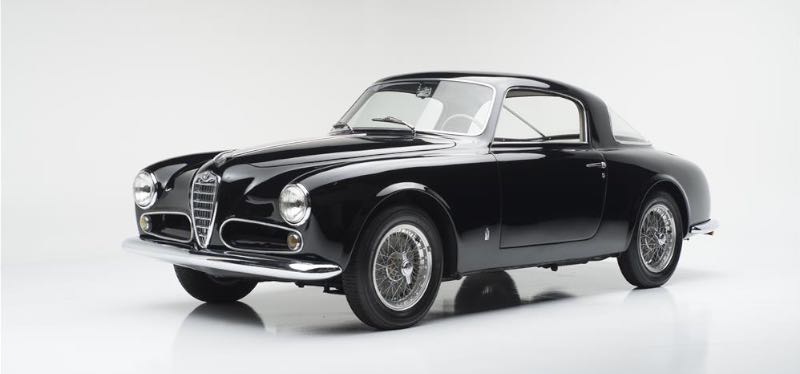

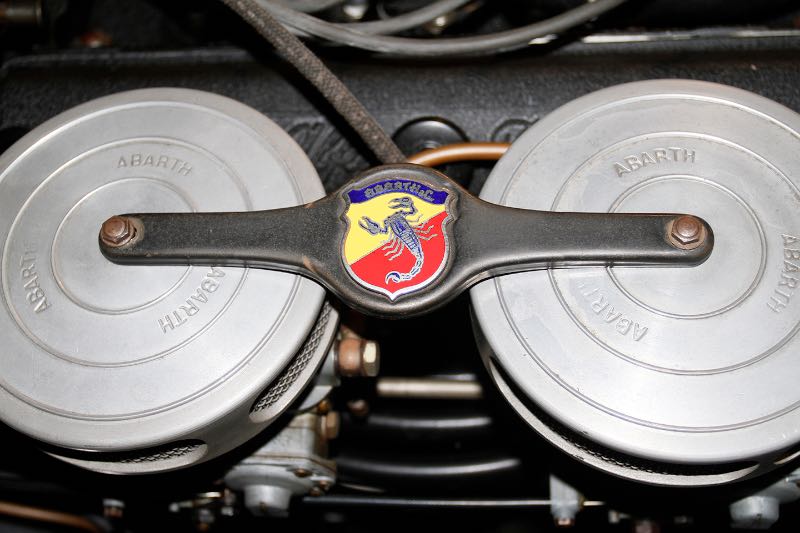
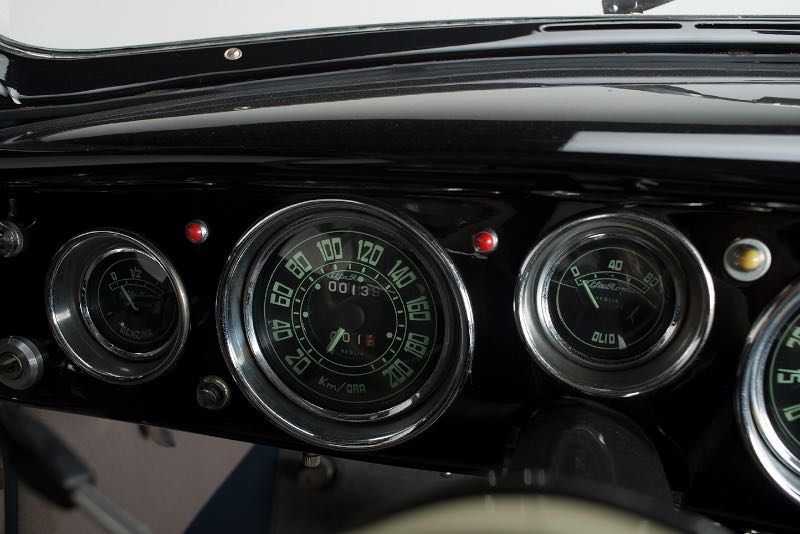
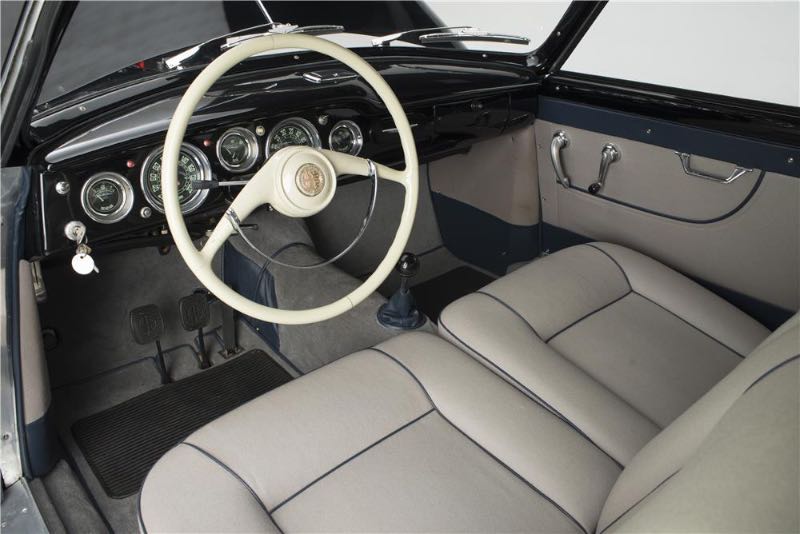
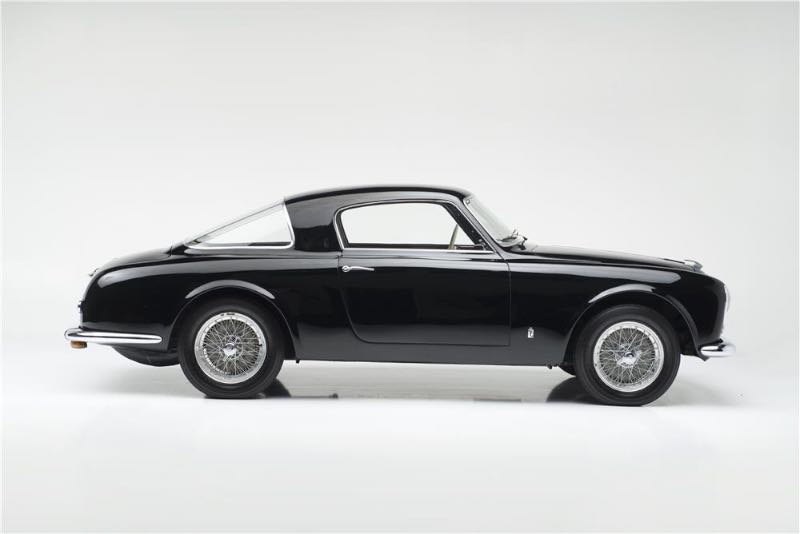
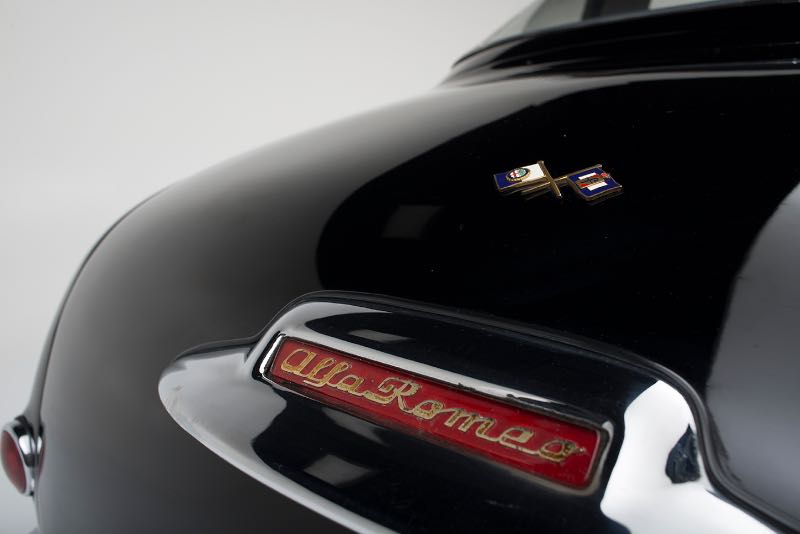
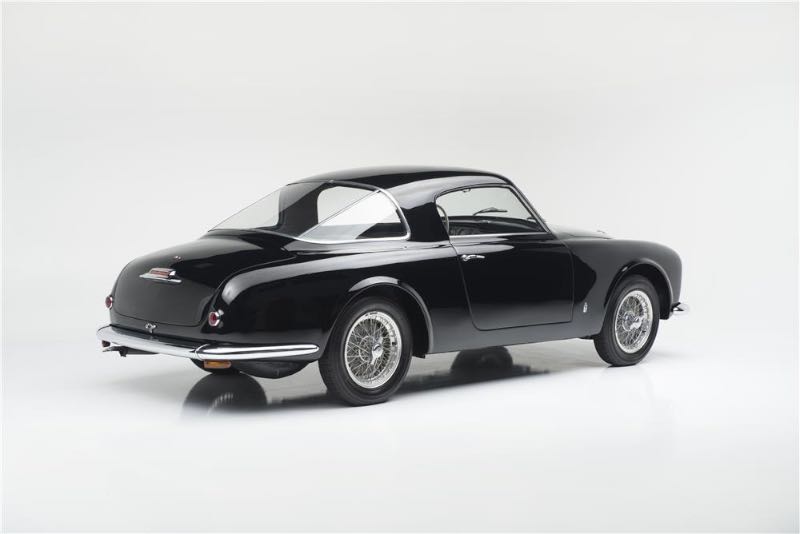
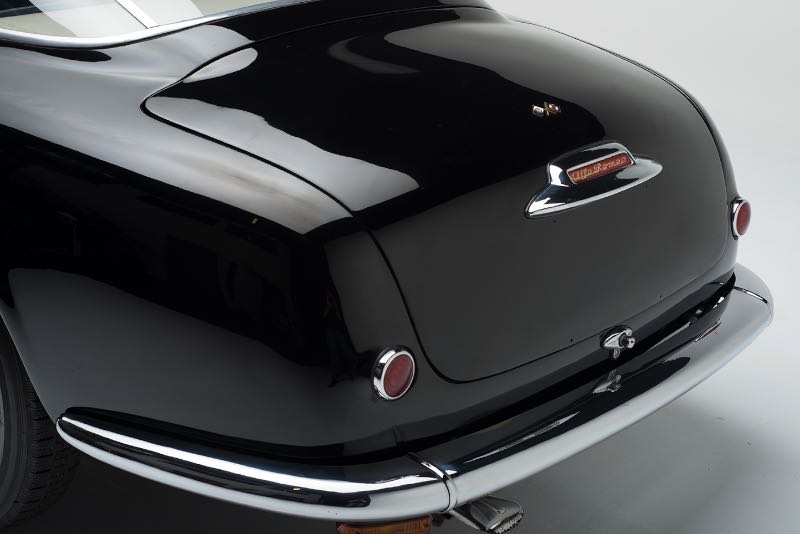
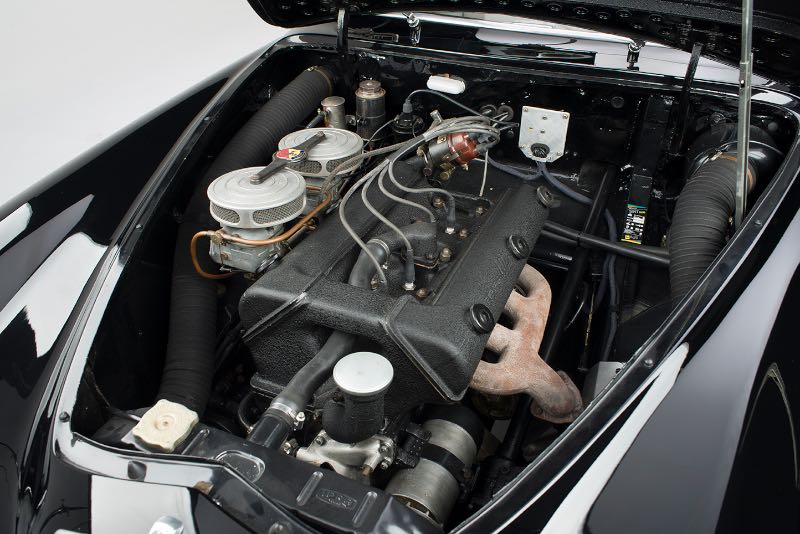

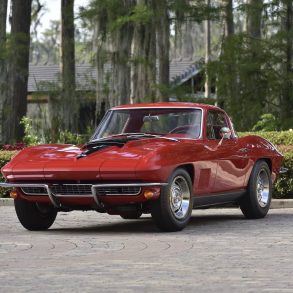





I have been Lucky during my carrer , I have spent lots of time taking care of Alfas, the 1900 Sprint had a very smart system to adjust the valves gap, no need to remove the cameshats & replace shim pads as the newer models, the valve stem of large, 10mm diameter was threaded inside, a dog paw style cup screed in another upper cup with identical dog paws, you could turn the upper washer that gave you a 0.01″ of an inch adjustment, I found the same
valve shame in the 1955 Maserati A6G Zagato, using the same factory tool to adjust the valves, Plus alfa 1900 4cylinder engine had an unusual firing order ! 1-2-4-3, different to most regular 4cylinders of 1-3-4-2
great souvenirs working on these cars & driving them also
Sometimes you have a fantastic entry
Thank you for a nice story
Henk de Vries
Amsterdam
I’d like to know just what kinda Alfa I had 40 years ago. It was a 5-window coupe with column shift, magneto ignition (I think) driven off a camshaft, wire wheels; the bumpers had been removed and it had plexi windows.The man who brought it by unsolicited(another $2500 car of the near half-dozen odd cars I bought at that price in that year or so) said it’d been a recce car for the Alfa team at the Carrera Panamericana. Sold it to a nice T.U. prof whose name has finally escaped me for $4k; a couple years later he sold it for around $35k to someone in the northeast. What was it?
It was most likely a Touring bodies CSS. I’ve owned one since 1976, I found it while attending college in New Hampshire. It is a five window coupe with a five speed on the column. Check out http://www.alfa1900.com this website is dedicated to 1900s.